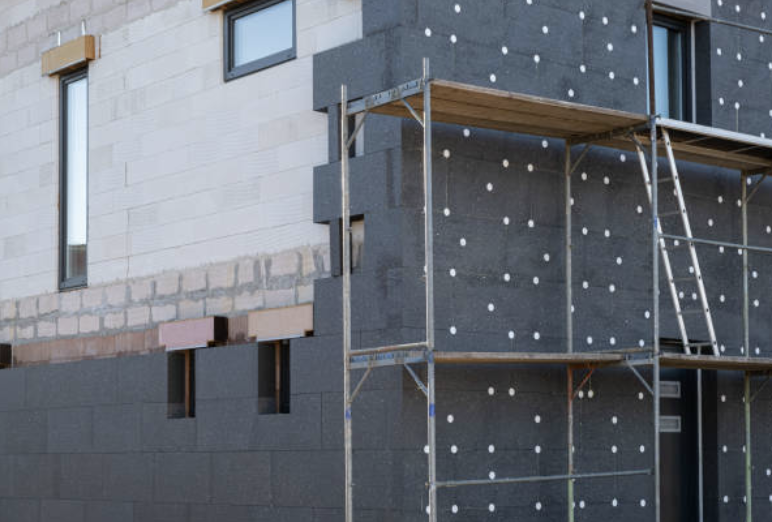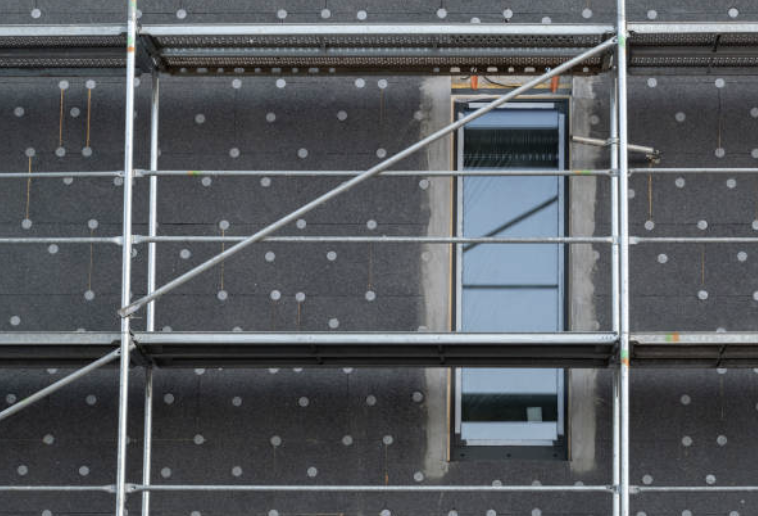Posted by Spycor Building on Apr 11th 2025

When it comes to protecting a building from moisture damage, enhancing energy efficiency, and meeting code requirements, the rainscreen system plays a crucial role. If you're a contractor or home builder searching for the right solution, understanding what to look for in a rainscreen system can make a major difference in performance, budget, and long-term durability.
In this comprehensive guide, we'll explore everything contractors need to know before buying a rainscreen system for building projects. From how rainscreen systems work to how to choose the best product for your project, we’ll also show you where to buy top-quality rainscreen systems that perform under pressure.
What is a Rainscreen System for Building?
A rainscreen system is a construction technique used to protect a building's exterior walls from water infiltration. It consists of a moisture-resistant barrier (such as a weather-resistive barrier or WRB), an air gap for ventilation, and exterior cladding. The system allows water that penetrates the outer cladding to drain and evaporate, preventing damage to the structure.
Contractors and builders rely on rainscreen wall systems for moisture control in buildings, especially in regions with high humidity or frequent rain. These systems are now considered essential in both residential and commercial construction due to their role in extending a building's life and improving energy efficiency.
Why Contractors and Builders Choose Rainscreen Systems
-
Moisture Control: Rainscreen wall systems provide a crucial barrier against moisture, reducing mold, rot, and water damage.
-
Energy Efficiency: The air cavity created by the system helps regulate temperature and prevents thermal bridging.
-
Building Code Compliance: Many local building codes now require or recommend the use of rainscreen systems, especially in multi-family and commercial projects.
-
Reduced Maintenance: By keeping moisture away from structural components, rainscreens reduce the frequency and cost of maintenance.

How to Choose the Right Rainscreen System for Your Building
Choosing the right rainscreen system starts with evaluating your project’s needs. Here are the key considerations:
-
Climate Zone: In wet or coastal climates, a more robust rainscreen with drainage mats or furring strips is recommended.These climates experience high humidity and frequent storms, making moisture control critical. A high-quality rainscreen wall system for moisture control in buildings will prevent long-term damage and preserve the structure.
-
Cladding Type: Some claddings like fiber cement, wood, or metal require different types of support structures or venting systems.The wrong rainscreen system for your cladding can result in poor ventilation and moisture build-up. Always ensure your rainscreen system for building is compatible with your chosen exterior materials.
-
Building Height: Taller buildings may need pressure-equalized rainscreen systems to manage wind-driven rain. As building height increases, so does the wind load, which can push water deep into wall systems. Contractors should assess elevation and exposure before installing a rainscreen.
-
Budget: While rainscreens vary in price, it's important to choose one that balances cost with durability and ease of installation. Look for rainscreen systems for contractors that offer long-term savings through energy efficiency and reduced maintenance. Buying cheap can lead to high repair costs later.
-
Code Requirements: Verify local code requirements to ensure compliance and avoid project delays.Some areas now mandate rainscreen building systems for all commercial construction. Understanding what contractors should know before installing a rainscreen can help avoid fines and rework.
Best Rainscreen System for Commercial Construction Projects
Commercial projects often face stricter building codes and higher performance expectations. For contractors looking for the best rainscreen system for commercial construction projects, focus on options that:
-
Provide continuous drainage and ventilation.These systems help manage moisture by promoting consistent airflow and allowing water to escape easily. Continuous drainage is essential to avoid trapped water, which can cause mold and structural issues.
-
Are compatible with a wide range of exterior claddings: Flexibility in cladding options allows for easier design choices and better adaptability to architectural plans. This is especially useful in multi-building developments where varying aesthetics may be needed.
-
Meet NFPA and ASTM standards. Compliance ensures the system has passed rigorous fire, durability, and moisture resistance tests. Meeting these standards can also simplify the permitting process and enhance client trust.
-
Offer high UV and mold. Rainscreen systems exposed to the elements must resist degradation over time. UV and mold-resistant materials increase system longevity and reduce the risk of system failure due to environmental exposure.
Types of Rainscreen Systems for Contractors
-
Open-Joint Rainscreen: Allows airflow behind the cladding; suitable for modern, high-performance buildings.These systems are ideal for projects with aesthetic priorities, as they often showcase sleek and contemporary designs. Open-joint systems also enhance ventilation, helping to quickly dry out trapped moisture.
-
Vented Rainscreen: Includes vent openings at the top and bottom to allow airflow. This system supports passive ventilation and promotes consistent drying across the wall assembly. It is commonly used in both residential and light commercial buildings.
-
Pressure-Equalized Rainscreen: Reduces pressure differences to minimize water infiltration, ideal for high-rise or coastal structures. This system is engineered to counteract wind-driven rain by maintaining equal air pressure within the cavity. It is a top choice for tall or complex buildings with rigorous moisture management needs.

What Contractors Should Know Before Installing a Rainscreen
-
Proper Installation is Key: A rainscreen system is only as effective as its installation. Ensure the air gap is consistent and drainage paths are unobstructed.
-
Use the Right Fasteners: Incompatible fasteners can cause corrosion or failure in the system.
-
Inspect WRB Thoroughly: The weather-resistant barrier must be installed correctly before cladding goes up.
-
Account for Airflow: Proper airflow helps with drying and prevents trapped moisture.
Benefits of Using Rainscreen Wall Systems for Moisture Control in Buildings
-
Longer Building Life: Prevents structural decay from trapped moisture
-
Improved Indoor Air Quality: Reduces mold risks
-
Energy Savings: Better insulation and airflow management
-
Professional Finish: Enhances the overall look and durability of exterior cladding
FAQs: Rainscreen Systems for Contractors and Builders
Q: What’s the difference between a rainscreen and a traditional weather barrier? A: A rainscreen includes an air gap and drainage system in addition to a WRB, offering better moisture protection.
Q: Do I need a rainscreen system for a residential project? A: Yes, especially in moisture-prone areas. Even single-family homes benefit from added protection and energy efficiency.
Q: Can I retrofit a rainscreen system? A: In many cases, yes. Contact Spycor for guidance on retrofitting solutions.
Q: Are rainscreen systems expensive? A: Costs vary, but long-term savings on repairs and energy make them a wise investment.
Choosing the right rainscreen system for your building project is a critical decision for any contractor or builder. It impacts everything from code compliance to building longevity and client satisfaction. By investing in a high-performance rainscreen system, you ensure your project stands the test of time.
Ready to find the perfect rainscreen wall system?
CLICK HERE to check the best rainscreen for your building project at SpycorBuilding.com. Let us help you build smarter, safer, and more efficiently.



